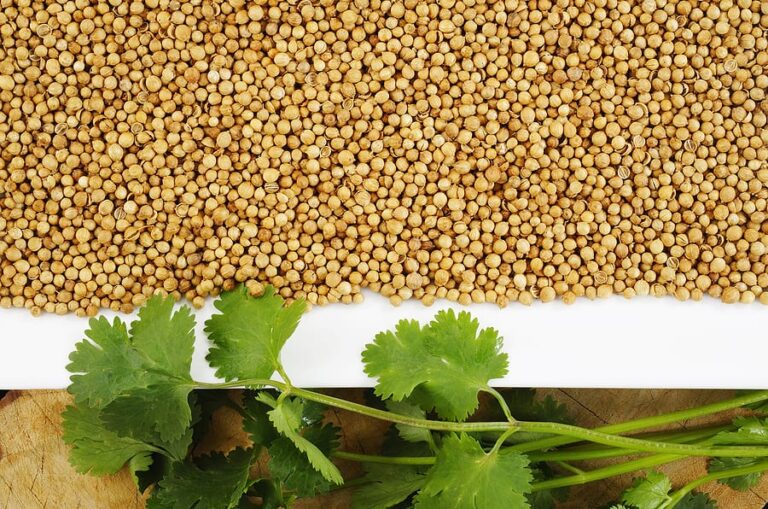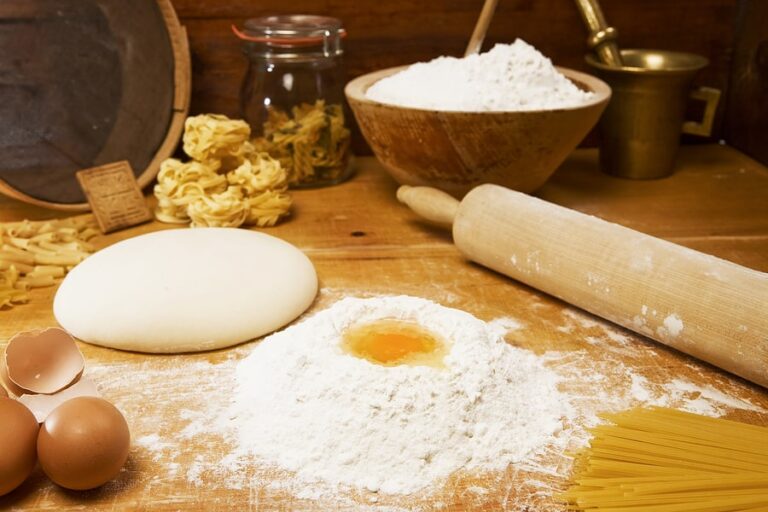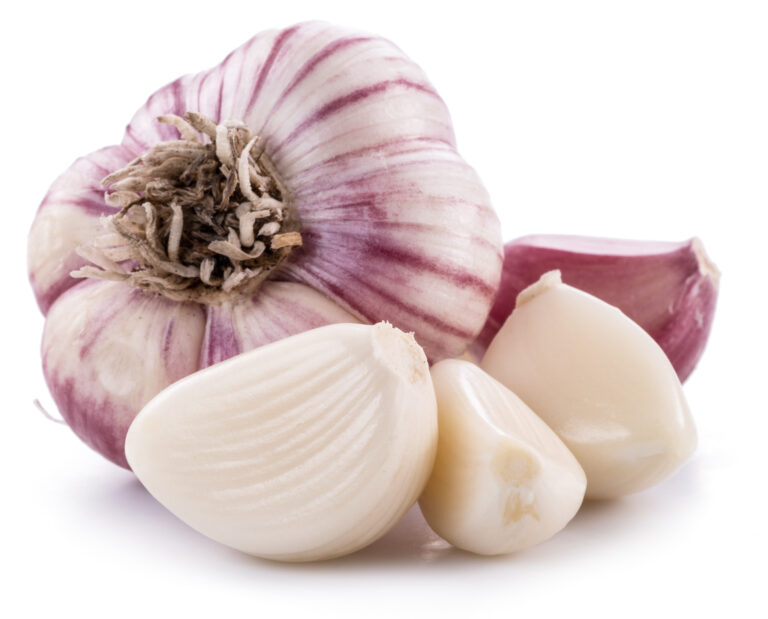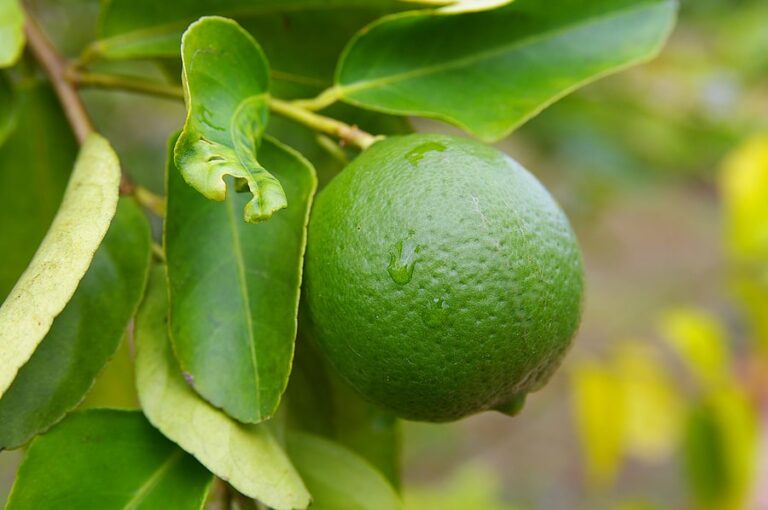Cooking with Onions: Recipes and Tips to Bring Out Flavor
Onions come in a wide range of sizes, shapes, and colors, as well as specific varieties.
There are fresh onions and onions for storage. There are onions for eating raw and onions for cooking. There are mild onions and pungent onions. There are onions that grow best where the days are short and onions that grow best where the days are long. There are green onions, white onions, yellow onions, and bronze onions.
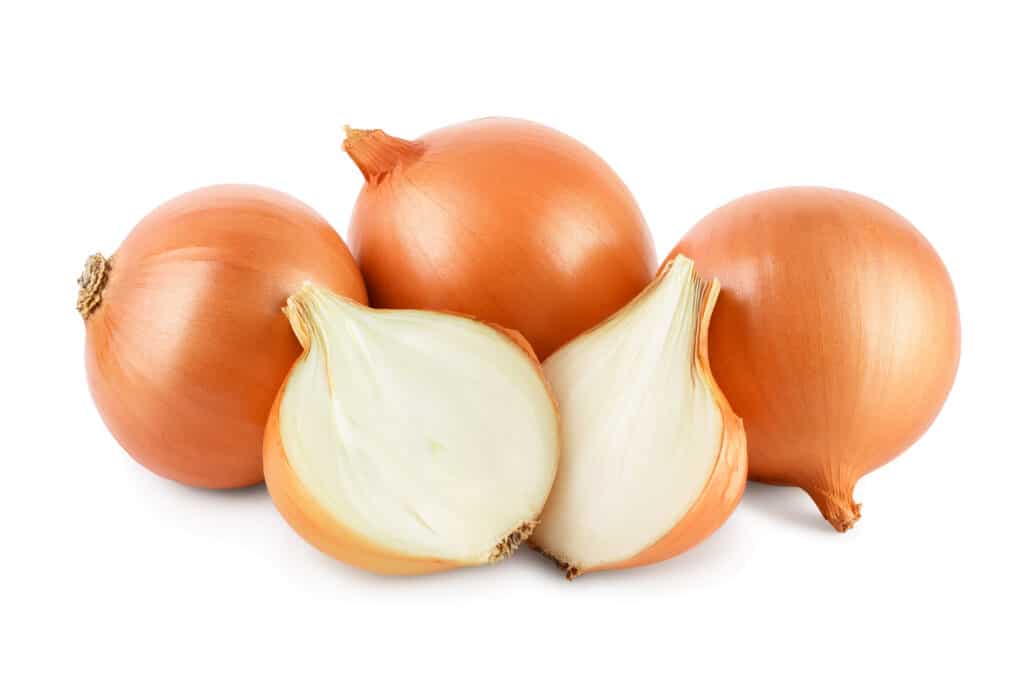
There are so many kinds and uses for onions that old-time produce workers will compliment colleagues by saying, “that fella really knows his onions.”
But when it comes to onions in the kitchen or at the table, there are basically three kinds of onions: bunching onions—also called scallions, spring onions, and green onions; bulb or common onions—also called dry onions, storing onions, or cooking onions; and pickling onions.
Onion types and their uses
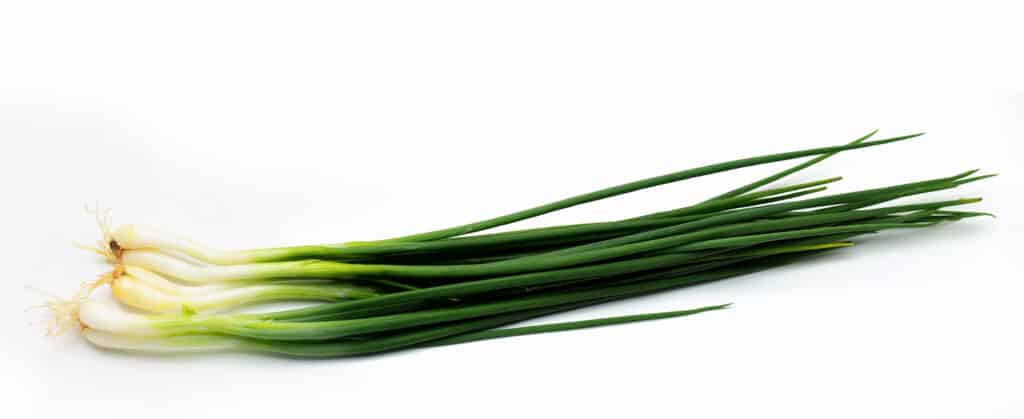
Spring onions
- Spring onions are also called bunching onions, green onions, or scallions. These onions are sometimes called spring onions because they are often harvested in the spring or early summer before their bases have developed into bulbs. Both the base and leaves of spring onions are edible. The bases can be served raw alone, on crudité trays, or in salads, braises, casseroles, pasta, soups, quiches, and omelets, and the stems can be chopped up and used as a flavoring.
- Spring onions and green onions are often called scallions, but this is a misnomer. Scallions are actually a separate and distinct variety. True scallions have a milder flavor than green onions. The sides of the bases of scallions are straight while a bunching onion has a base that is slightly curved, the beginning of a bulb.
- Spring onions have a sweet and sharp flavor. They don’t store well and are best used quickly. Bunching onions varieties include: ‘Ishikura Long’, ‘Red Beard’, ‘Redmate’, ‘Southport White Bunching’, and ‘White Lisbon’.

Bulb onions
- Bulb or common onions or dry onions—also called storing onions, cooking onions, and summer onions–are harvested after their bulbs have matured and the stems and leaves have begun to yellow and wilt.
- Dry onions come in a wide range of sizes, shapes, and flavors. Some are round, some are flattened, some are top-shaped, and some are elongated. These onions can be yellow, white, brown, or red depending upon the variety. All have juicy flesh covered with dry, bronzy, papery skin. They can be moderate to strong-flavored but sweeten when cooked. Many varieties of bulb onions can be used for storing, shipping, and cooking. Most of these onions are harvested beginning in mid-summer and can be stored in the winter.
- Yellow bulb onions are the most common dry onions and the best for storing. They can be used in soups, casseroles, sandwiches, and also for grilling. These onions are sometimes also called slicing onions.
- Yellow onions are usually round but also include the slightly-flattened and mild-flavored yellow Bermuda onion and the larger, spherical yellow Spanish onion. These onions are available in late summer or fall and can be stored at 27 to 32ºF (-3 to 0ºC) for winter consumption.
- Yellow onion varieties include ‘Alisa Craig’, ‘Early Yellow Globe’, ‘Senshyu Semiglobe Yellow’, ‘Sweet Spanish’, and ‘Sturon’.
- ‘Walla Walla’ and’ Vidali’a are two large, very sweet and juicy yellow onions that are not good for storing and are best used fresh.
- Red bulb onions are mild and the sweetest tasting of all onions. They are usually used raw on sandwiches or chopped as a condiment. Red bulb onions mature in the late summer and store well. Some red onions are also called Italian onions.
- Red bulb varieties include ‘Red Hamburger’, ‘California Wonder Red’, ‘Lucifer’, ‘Redman’, ‘Southport Red Globe’, ‘Zapotec’, and ‘Zuni’.
- White bulb onions have more bite than red or yellow onions. They are used in salsas and other Latin dishes or where fresh, crisp onions are used to add a zing. White bulb onions are available in late summer and are not good keepers. Use white onions fresh.
- White bulb onion varieties include ‘Blanco Duro’, ‘Kelsae Sweet Giant’, ‘Southport White Glove’, ‘White Sweet Slicer’, ‘Sweet Spanish Utah’, and ‘White Sweet Spanish’.
- Maui onion is another white to pale yellow onion that is sweet and mild. It is pigmented in the skin of onions that cause them to turn yellow, red to purple and white depending upon the variety.
- Bermuda, Italian, and Spanish onions are bulb onions that are larger and milder tasting than other common or dry onions. Bermuda onions have yellow, white or bronze skins and typically are flat at both ends, not round like other dry onions. Italian and Spanish onions are spherical in shape. Italian onions are red. Spanish onions are bronze and yellow. Sometimes these onions are called Creole type onions. They are excellent raw in sandwiches or salads.
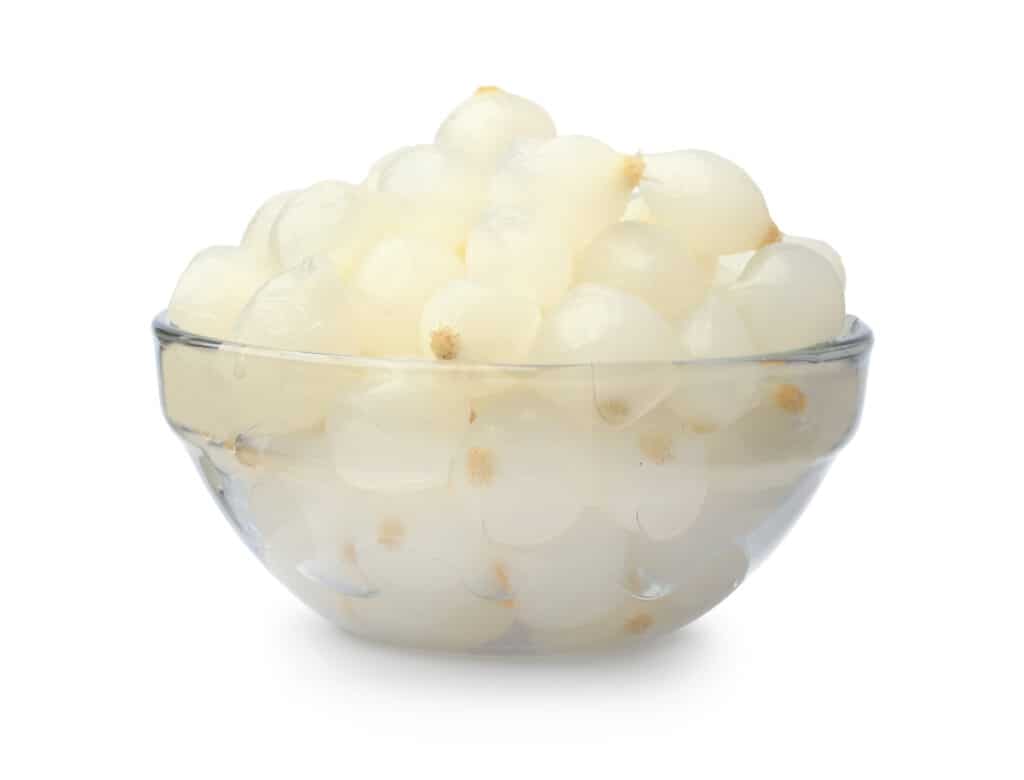
Pickling onions
- Pickling, pearl, or boiling onions–also called creamers, boilers, silverskins, minis, and buttons—are small-growing onions or onions of bulb varieties that have been planted so close together that they never mature to full size. These onions are mild-flavored and very small and round—about the size of a marble. They are usually available in early to mid-summer.
- Pickling onions can be used as a condiment or garnish or they can be pickled by soaking in iced water and vinegar.
- Boiling onions are usually about 1 inch in diameter (2.5 cm). They can be boiled whole and served as a side dish or added to stews and soups. They also can be used fresh in salads or added to kabobs for barbecuing or cooked in stir-fries.
- Varieties of pickling onions include ‘Brown Pickling’, ‘White Paris’, ‘White Pearl’ also called ‘Barletta’, ‘Borettana’ also called ‘Cipollini’ and ‘Italian Button’, and ‘Purplette’.
How to choose onions
- Green onions should have necks that are blanched 2 to 3 inches (5-7.5 cm) above the root. The tops of green onions should be green, fresh, and crisp looking.
- Select dry, bulb onions that are firm with smooth, papery skins. The necks should be tightly closed with no signs of sprouting. Onions should be heavy for their size. Avoid onions that are spotted or have soft, sunken spots. Sprouted dry onions will be bitter tasting.
- Pickling or pearl onions should be uniform in size, firm, and have no bruises.
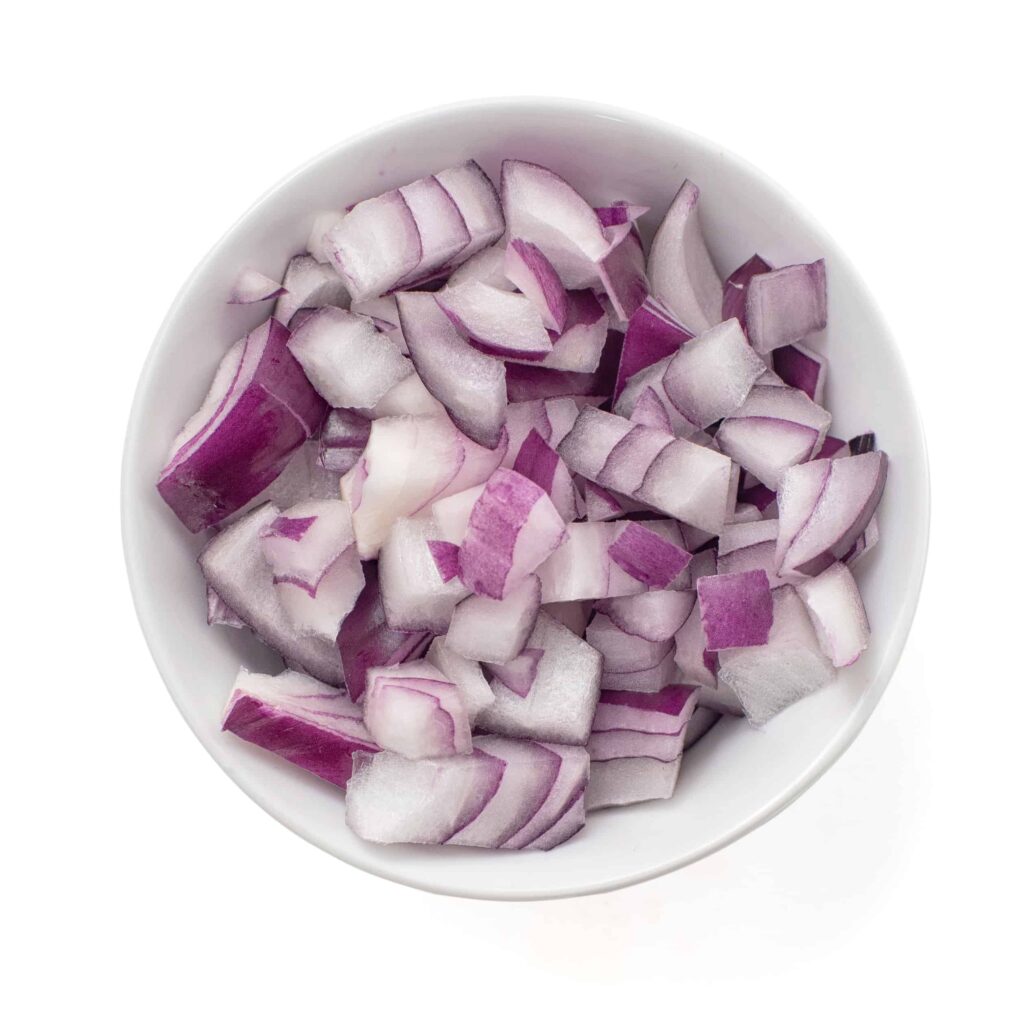
How to store onions
- Green and bunching onions can be kept in the vegetable compartment of the refrigerator for about one week.
- The keeping quality of bulb onions depends upon the variety and the water content of the onion. Yellow onions, with the least water content, will keep for 2 to 3 months in a cool dry place. Red onions will keep for only 2 to 4 weeks. White onions, with the most water content, will keep a few days.
- Bulb onions should be cured or dried before they are stored. Onions can be dried for 10 to 20 days in a moderately warm, dry area before storing. It is best to leave about 1½ inches (4 cm) of stalk above the bulb.
- Keep bulb onions in a cool, dry place with air circulation—in a loosely woven bag—not plastic. They store best at low temperatures of 32-45ºF (0-7°C) or a high temperature of 77-95ºF (25-35°C) for 3-6 months without sprouting. The poorest storage is at room temperature in the range of 60-70ºF (15-21°C).
- If you keep bulb onions in the refrigerator, wrap each onion individually in foil otherwise the odor will spread to other food.
- Once cut, onions should be consumed quickly. Chopped onions will keep fresh in bags in the refrigerator for a few days or can be frozen but they will lose flavor.
- To dry onions: cut into slices, place on a cookie sheet in the sun for 2 to 3 days then place in a 185°F (85ºC) oven for about 10 minutes or in a dehydrator for a few hours at 180° to 190º F (82-88ºC).
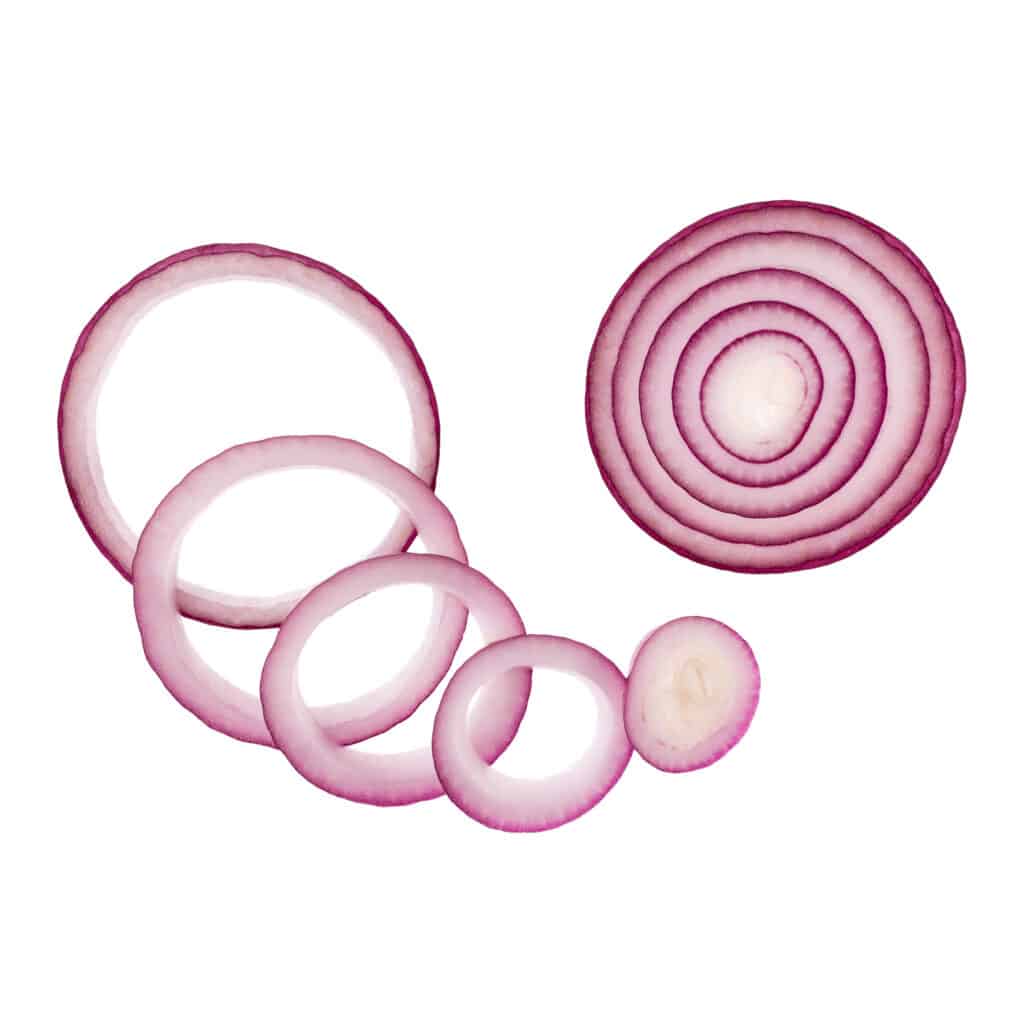
How to prepare onions
- When an onion is cut or sliced some of the onion’s cells are ruptured and they release a sulfurous content which on contact with the air creates a new molecule allyl sulfate which irritates the eyes.
- To reduce eye irritation and tearing, use a sharp knife when cutting onions and keep your face away from the onion. If you cool the onion for 1 hour in the refrigerator or 20 minutes in the freezer before cutting, the effect of the enzyme will be lessened.
- You can also wear goggles or eyeglasses when cutting onions or cut the onion under a stream of cold water which will dissolve the molecules.
- To separate the onion’s layers remove the fibrous part of the base first.
- Finely chopped onions will cook quickly but have less flavor than whole onions.
- To remove onion odor from your hands rub them with lemon juice or vinegar.
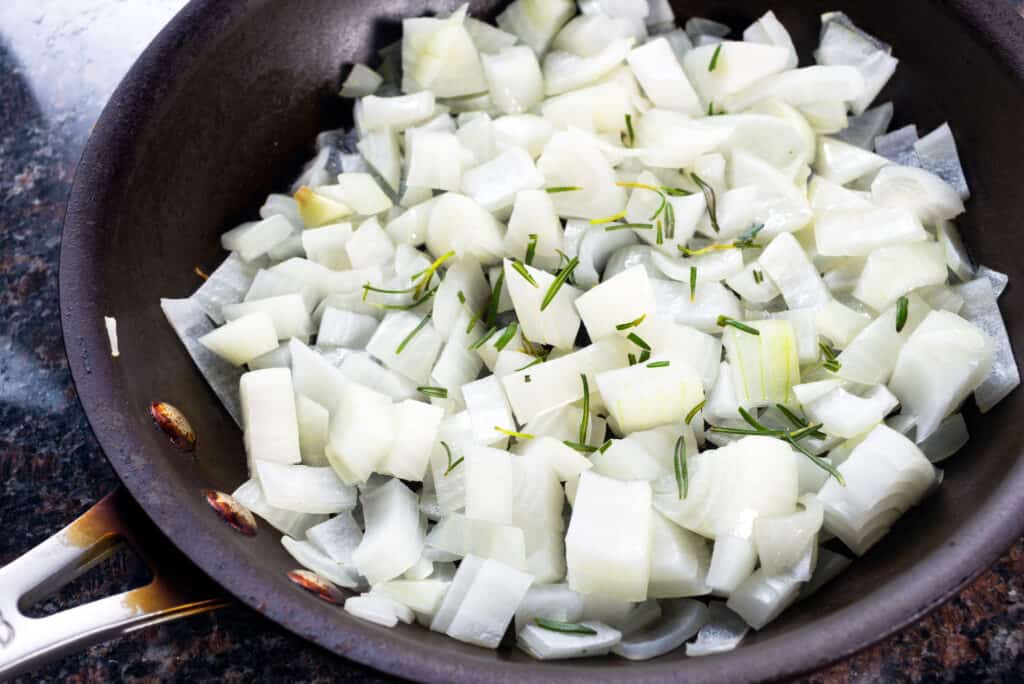
Onion cooking tips
- Simmer small onions whole or large onions cut into halves or quarters. Simmer for 15 to 30 minutes or until they are just soft.
- Steam onions for 20 to 40 minutes or until just soft.
- Sauté chopped or sliced onions over low heat for 15 to 20 minutes until they turn golden but not brown. Slow cooking will bring out the best flavor.
- Deep-fry onion rings in a wet batter until the crust is golden brown.
- Bake onions that have been parboiled for 1 to 2 minutes and refreshed in cold water. Bake in a preheated oven at 400 to 450ºF (204-232ºC) for 30 to 60 minutes.

Onion serving suggestions
- Onions are a seasoning or condiment in almost all of the world’s cuisines and they are eaten as a vegetable in many.
- Use fresh onions raw when mild in salads, soups, sauces, stews, and curries.
- Use onions as a condiment raw or cooked, chopped, minced, or sliced.
- Onions add flavor to cooked dishes. They become sweeter and lose their sulfurous enzymes during cooking. To moderate the sharpness of an onion, blanch it for a few minutes then rinse it in cold water to halt the cooking process.
- A cooked onion will be more flavorful if it is sweated in a little fat until it is slightly soft.
- Large onions can be sliced like potatoes and baked like scalloped potatoes. Stuff large onions and bake. Dip thick onion rings in a wet batter and deep-fry. Cut thin onion rings into a salad. Onions can be baked au gratin, fried, stir-fried, or creamed.
- Top sandwiches, salads or burgers with slices of red, white, or yellow sweet onion.
- Yellow onions are used in classic dishes such as onion quiche, pizza, onion soup, dishes à la soubise (a rich sauce made by combining béchamel with puréed cooked onions) and à la niçoise (hot and cold dishes that include tomatoes, black olives, onions, and sometimes anchovies).
- Small onions can be parboiled with a cream sauce. They can also be glazed or pickled and added to stews and simmered dishes. Roast whole small onions at high heat till caramelized. Marinate pearl or cippolini onions and thread them on kebabs for grilling.
- Add chopped, sautéed onions to a cream sauce for vegetables.
Onion flavor partners
- Onions are a good match for any savory food.
- Onions served alone or as a side dish can be seasoned with salt, pepper, dill, caraway seed, mustard seed, paprika, mace, nutmeg, allspice, parsley, sage, rosemary, or thyme.
Onion nutrition
- The nutritional value of onions is nominal.
- A medium onion will have 38 calories and contain potassium, vitamins C and B, and folic acid.
- Cooked onions have about the same vitamin and mineral content as raw onions.
The botanical name for onions is Allium cepa.
Onion Growing Hub
Start here: The Ultimate Onion Growing Guide: From Seed to Harvest
🌱 Planning & Varieties
- How to Choose the Best Onion Varieties for Your Region – Match flavor, storage, and climate to your garden.
- Daylength and Onion Growth: Understanding Short, Intermediate, and Long-Day Varieties – Pick the right type for your latitude.
- Growing Bulb Onions: Pick the Right Variety for Your Garden – Choose the right variety for where you live.
- Onion Sets vs. Seedlings vs. Seeds: Which Is Best for Your Garden? – Pros and cons of each planting method.
🌿 Planting & Starting
- Step-by-Step Guide to Starting Onion Seeds Indoors Successfully – Timing and troubleshooting for strong transplants.
- Planting Onions Seeds and Sets – Here’s how to get started.
- How to Grow Onion Sets – You can grow your own onion sets from seed for next year.
- Growing Onions in Containers: Soil, Pots, and Care Tips – Small-space planting success.
- How to Grow Green Onions, Spring Onions, and Scallions – Learn how these alliums differ.
- How to Plant, Grow, and Harvest Welsh Onions – Learn to grow these mild-flavored members of the onion family.
🌞 Care & Maintenance
- Watering Onions for Optimal Growth: Techniques and Tips – How much and how often to water.
- Feeding and Fertilizing Onions: Organic and Synthetic Options – Nutrient needs for strong bulbs.
- Companion Planting with Onions: Plants to Grow With and Avoid – Beneficial pairings and plants to avoid.
- Onion Family Growing Problems: Pest, Disease, and Problem Controls – Natural control of thrips, maggots, and more; identifying and treating fungal or bacterial problems.
🧅 Harvest & Storage
- How to Harvest Onions at Peak Maturity for Best Storage – Signs onions are ready and how to cure.
- How to Harvest and Store Onions – Here are the basics for harvesting and storing onions.
- Onion Storage Techniques: Keep Your Harvest Fresh for Months – Best environments for long-term keeping.
🍳 Using Your Onions
- Cooking with Onions: Recipes and Tips to Bring Out Flavor – From fresh salads to caramelized dishes.
- How to Make Onion Soup with No Recipe – Enjoy this tasty classic!
Onion articles at Harvest to Table:
How to Grow Green Onions, Spring Onions, and Scallions
Growing Onion Bulbs: Pick the Right Variety for Your Garden
How to Plant, Grow, and Harvest Welsh Onions
How to Harvest and Store Onions
Onion Family Growing Problems: Troubleshooting
Onion Cooking and Serving Tips
Tasty Ways to Cook and Serve Shallots
How to Make Onion Soup with No Recipe
How to Plant, Grow, and Harvest Shallots
English Peas, Spring Onions and Roasted Almonds
Tropea Onion – The Red Torpedo
Articles of interest:
Best Herbs for Container Growing
Garden Planning Books at Amazon:
- Vegetable Garden Almanac & Planner
- Kitchen Garden Grower’s Guide Vegetable Encyclopedia
- Vegetable Garden Grower’s Guide
- Tomato Grower’s Answer Book
More kitchen tips:
Bring your harvest to the table. Kitchen prep tips and easy recipes for the vegetables you grow. Click below for vegetable prep and recipes you can use now.
- Almonds
- Apples
- Apricot
- Aprium
- Artichoke
- Arugula
- Asparagus
- Avocado
- Bamboo Shoots
- Banana
- Basil
- Beans, Dried
- Beans. Long
- Beans, Shell
- Beans, Snap
- Beets
- Bitter Melon
- Blackberry
- Bok Choy
- Broccoli
- Broccoli Raab
- Brussels Sprouts
- Cabbage
- Cardoon
- Carrots
- Cauliflower
- Celeriac
- Celery
- Chard
- Chayote Squash
- Cherimoya
- Cherries
- Chestnut
- Chickpea
- Chinese Cabbage
- Chives
- Cilantro
- Citron
- Clementine
- Collards
- Coriander
- Corn, Sweet
- Corn, Baby
- Corn Salad, Mache
- Cranberry
- Cress
- Cucumber
- Daikon
- Dandelion
- Dill
- Eggplant
- Endive, Belgian
- Endive and Escarole
- Fava Beans
- Fig
- Florence Fennel
- Garlic
- Ginger
- Grapefruit
- Grapes
- Guava
- Horseradish
- Jerusalem Artichoke
- Jicama
- Jujube
- Kale
- Kiwifruit
- Kohlrabi
- Kumquat
- Leeks
- Lemongrass
- Lemons
- Lettuce
- Lime
- Mache (Corn Salad)
- Mandarin Orange
- Mango
- Maple Syrup
- Marjoram
- Melons
- Michihili
- Mint
- Mizuna
- Mushrooms
- Mushrooms, Cremini
- Mustard Greens
- Napa Cabbage
- Nectarine
- Okra
- Olives
- Olive oil
- Onions
- Oranges
- Oregano
- Parsley
- Parsley Root
- Parsnips
- Passion Fruit
- Pawpaw
- Peaches
- Pears
- Peas, Garden Snap
- Peas, Snow
- Pei Tsai
- Peppers, Chili
- Peppers, Sweet
- Persimmon
- Pineapple
- Pineapple Guava
- Plantain
- Plums
- Pluots
- Pomegranate
- Potatoes
- Prickly Pear
- Pumpkin
- Quince
- Radicchio
- Radishes
- Raspberries
- Rosemary
- Rhubarb
- Rutabaga
- Sage
- Salsify
- Sauerkraut
- Savory
- Shallots
- Sorrel
- Spinach
- Squash, Summer
- Squash, Winter
- Strawberries
- Sunchokes
- Sunflower
- Sweet Potato
- Swiss Chard
- Tangerine
- Taro
- Tarragon
- Thyme
- Tomatillo
- Tomato
- Turnip
- Turnip Greens
- Yams


